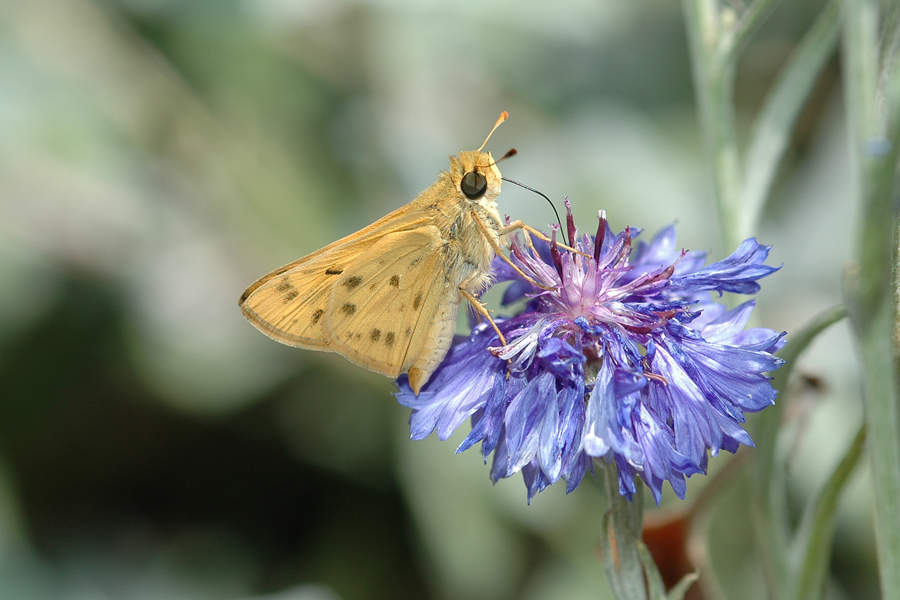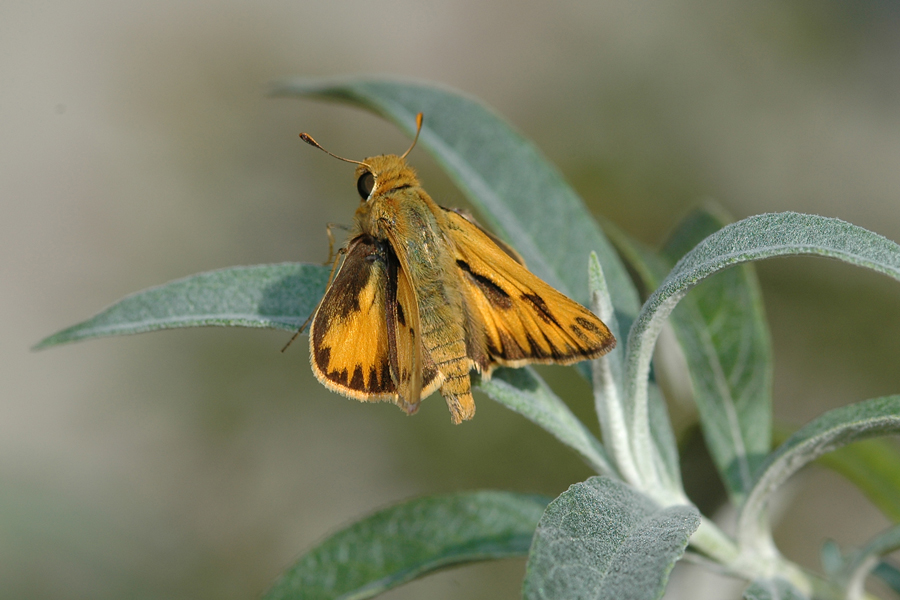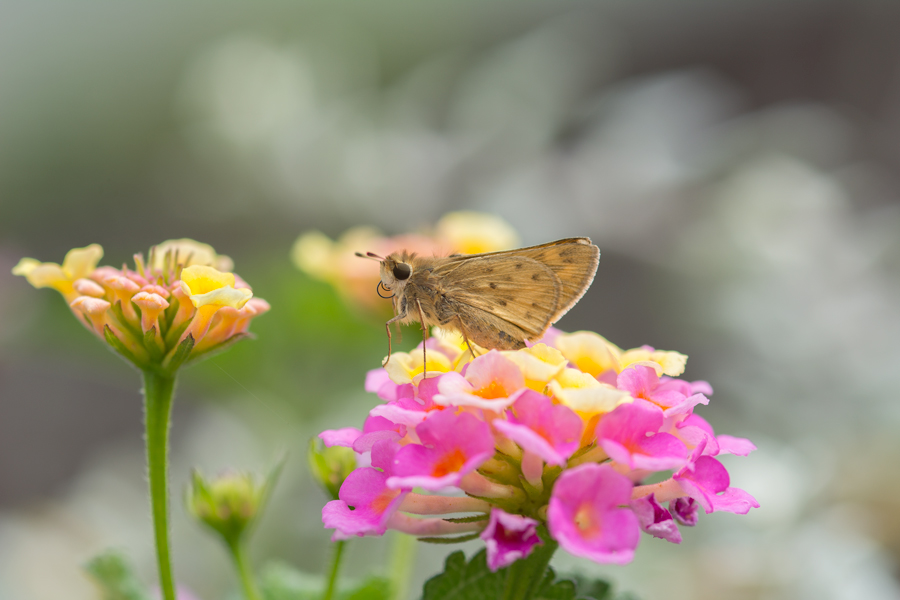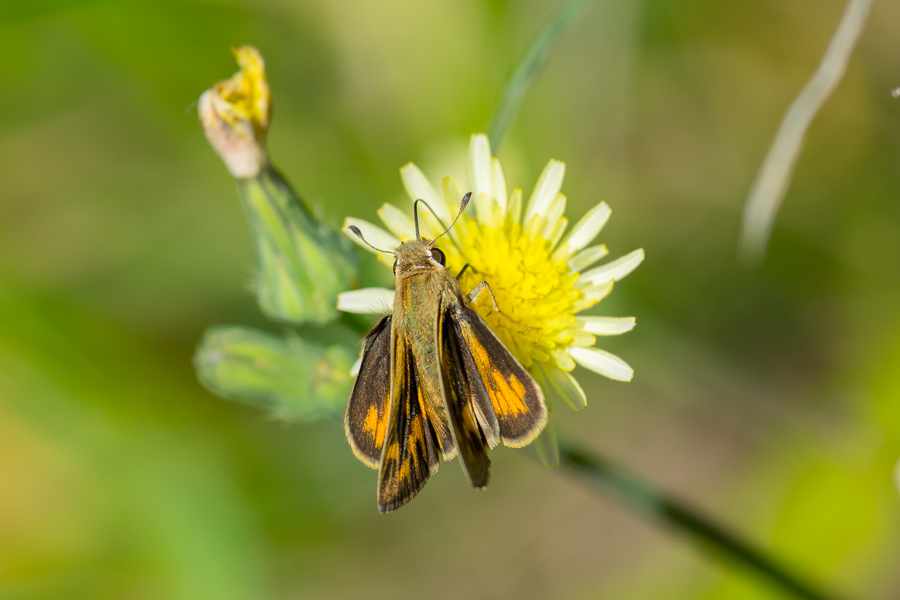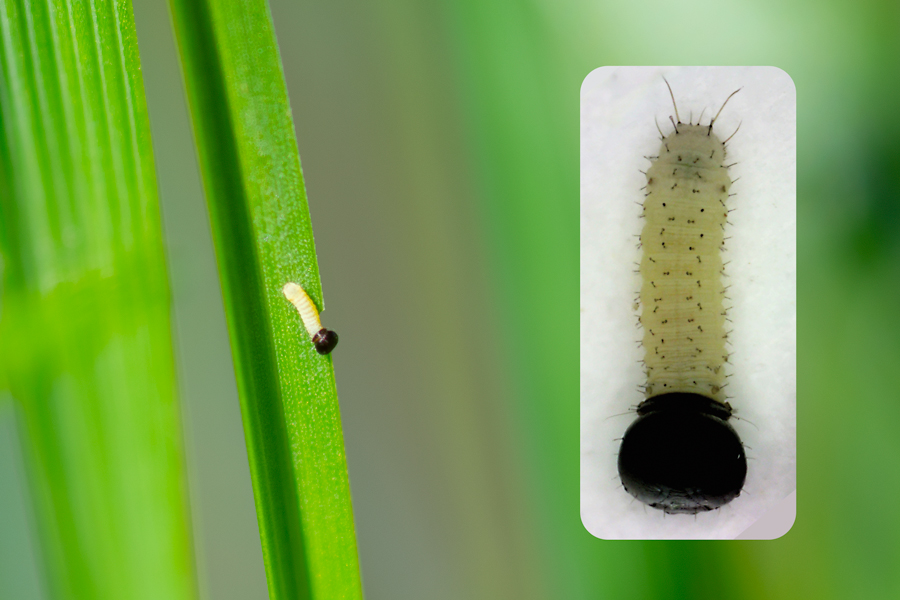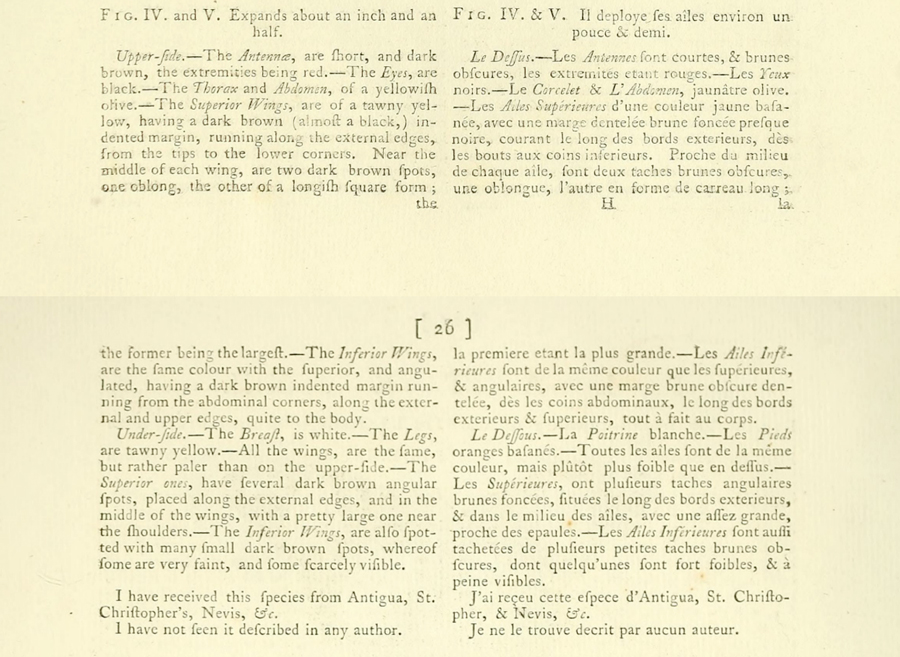Hylephila phyleus phyleus
Fiery Skipper
The fiery skipper is a suburban skipper if there ever was one, using Bermuda lawn grass as its main larval food plant and taking nectar at lantana and other common garden flowers. In the summer in the suburbs near LAX, I remember these swarming bushes when I was a kid. It is especially common later in the year, from the heat of late summer into the fall. As common as it may be, it isn't easy to find caterpillars, which seem to disappear in grass leaves sewn together as shelters low to the ground. Following an ovipositing female - they are larger and darker than males - is an easy way to see the eggs (shown below). Then they do their disappearing act.
A male fiery skipper taking nectar on bachelor's button in my garden in Long Beach, CA, June 24, 2005 (not long after I got a Nikon D70 camera body with the 105mm macro lens).
Another male fiery skipper in the garden, October 25, 2005.
Female fiery skipper in my garden, April 18, 2014.
Showing the dorsal side of the wings. Also in my garden in suburban Long Beach, March 18, 2016.
A tiny fiery skipper egg on host Bermuda grass, October 3, 2008.
A first instar caterpillar that had recently emerged from its egg. September 26, 2020.
This skipper was named by Dru Drury in 1773. This illustration was accompanied by the written description below, from his Illustrations of Natural History, published in London in 1770 in the first volume (without actually naming the skipper).
©Dennis Walker
